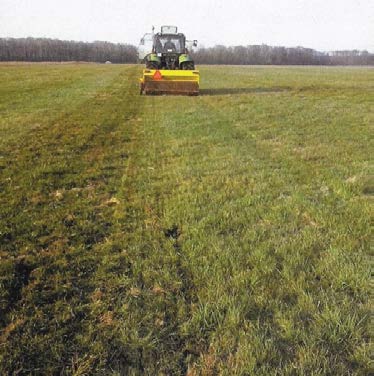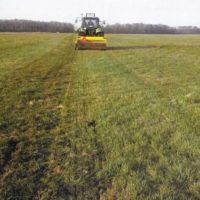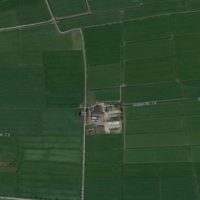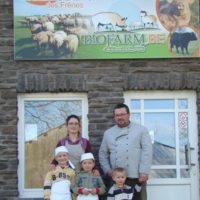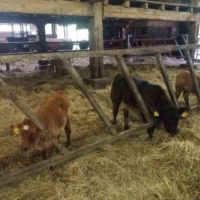The use of short-term and highly productive grass species on permanent grasslands in order to increase the yield of dry matter of grass per hectare and improve botanical composition of the sward
Farm: “Jerzy Kostrzewa Farm”
Location: Śniaty, Wielkopolskie voivodship, Poland
Case study
 The use of short-term and highly productive grass species on permanent grasslands in order to increase the yield of dry matter of grass per hectare and improve botanical composition of the sward (.pdf)
The use of short-term and highly productive grass species on permanent grasslands in order to increase the yield of dry matter of grass per hectare and improve botanical composition of the sward (.pdf)
Description
Background
Jerzy Kostrzewa has taken over family the farm from his parents as it was 20 ha big with few cows, few pigs and traditional crop production. Today farm is 106 ha big with 230 dairy cows of 10 500 l annual milk production per cow and is solely focused on dairy business. Such growth was driven by external economic and market factors as well as farmer’s own ambitions, skills and knowledge on dairy trends in Poland and in Europe. Simple getting the same profit, not mention profit growth, from agriculture production in Poland after transition requires an increasing volume of production, improving its effectiveness and concentration on the chosen production segment. Farm growth in dairy production, apart from investments in buildings and technology, required increasing farm area to produce feed for cows as close as possible. Mr. Kostrzewa was able to purchase some land around his farm but he was also forced to get the best use of land which was available to him. Apart from 83 ha of arable land which is intensively used for grain and maize production farm owns 23 ha of permanent meadows located along local river. Comparing the number of cattle on a farm (344,5LU) to farm size 106 ha we can immediately see a challenge. Each piece of land has to be used as good as possible. Where for arable crops it is relatively easy to reach it is very difficult in case of grassland.
Detailed description
As mentioned above farmer owns 23 ha of permanent grassland along Obra valley. It is one of a few subregions of Wielkopolska with access to grasslands creating certain possibilities for dairy farms. The original meadows consists of following species: Lolium perenne 20%, Festuca pratensis 10%, Festuca arundinacea 15%, Phalaris arundinacea 15%, Alopecurus pratensis 5%, Poa pratensis 5%, Festuca rubra 10%, Deschampsia caespitosa 2%, Trifolium pratense 5%, herbs and others 8%. This composition differs from place to place depending mainly on a soil quality and water level . This grasslands are used intensively by 3 time cutting per year. To find the best way of his grassland management farmer decided to make an experiment under supervision of Poznań University of Life Science. It is worth noted that at that time Jerzy Kostrzewa was student of this University and was completing his Msc thesis based on this experiment. In seasons 2015 and 2016 he divided his grasslands into 3 parts. One was left as original to see results of the other two trials. Second one was recultivated by oversowing existing grassland with a specially dedicated mixture of grasses and legumes. The third one was based on a full cultivation and setting a new composition based on following species: Festulolium 19%, Dactylis glomerat 9,5%, Festuca arundinacea 19%, Bromus inermis 4,75%, Lolium perenne 4N mid late 9,5%, Lolium perenne 4N mid early 4,75%, Lolium perenne 2N 4,75%, Lolium hybridum 4N 4,75%, Lolium westerwoldicum 4N 4,75%, Lolium multiflorum 4N 4,75%, Lucerne 9,5%, Trifolium hybridum 5%.
Results
The best results obtained from this experiment were for the version with full cultivation. The volume of grass production from this trial was 21,9 higher in comparison with over sowing and 85,6% higher in comparison with untouched, original grassland. Not only the volume of production increase but also quality of feed obtained. Concentration of protein for full cultivation increased by 20,4% in comparison with over sowing and 45% in comparison with original meadow.
The only shortcoming of full cultivation was that in a dry year which comes in 2018 the production results were worsened in comparison to the other two plots.
Adoption criteria
Results of Jerzy Kostrzewa experiment can be directly adopted by other dairy farmers along Obra river who own permanent grassland of similar nature and conditions. However we would highly recommend to adopt farmer’s approach rather than ready to go solution. To introduce innovations Jerzy followed certain steps like:
- Learning about his habitat conditions
- Considering several solutions (grass composition, method of cultivation, etc.)
- Investing some time in field tests of different solutions
- Choosing the best one for him
- Cooperating with science
Future prospects
Farmer for the time being is satisfied with results he has obtained from his innovation regarding optimal management of his grassland based on full cultivation and dedicated mixture of short-term and highly productive grass species. The main threat for time being is that in a very dry year full cultivation of grassland can result in a quite large decrease in grass production. With incoming climate changes it may cause a specific challenge for a farmer.
Presently Mr. Kostrzewa is considering how to solve the other issues on a farm which is too small milking system (2*7) regarding the number of cows on the farm. Milking time reaches 8 hours per day and requires 3 full time members of staff. Mr. Kostrzewa is considering installing 4 milking robots which he thinks would shorten milking time, reduce costs of labour and increase yield by 2 litres per cow per day.
The other innovation would be constructing biogas plant to use manure from the farm. With a high number of animals, limited farm size and environmental restrictions manure management needs to be optimised as well.
Additional information
| Farming system | conventional farming |
|---|---|
| Domains of innovation | forage mixture |
| Main types of animal | dairy cattle |
| Country | Poland |
| Product type | Case study |
| Language | English |

